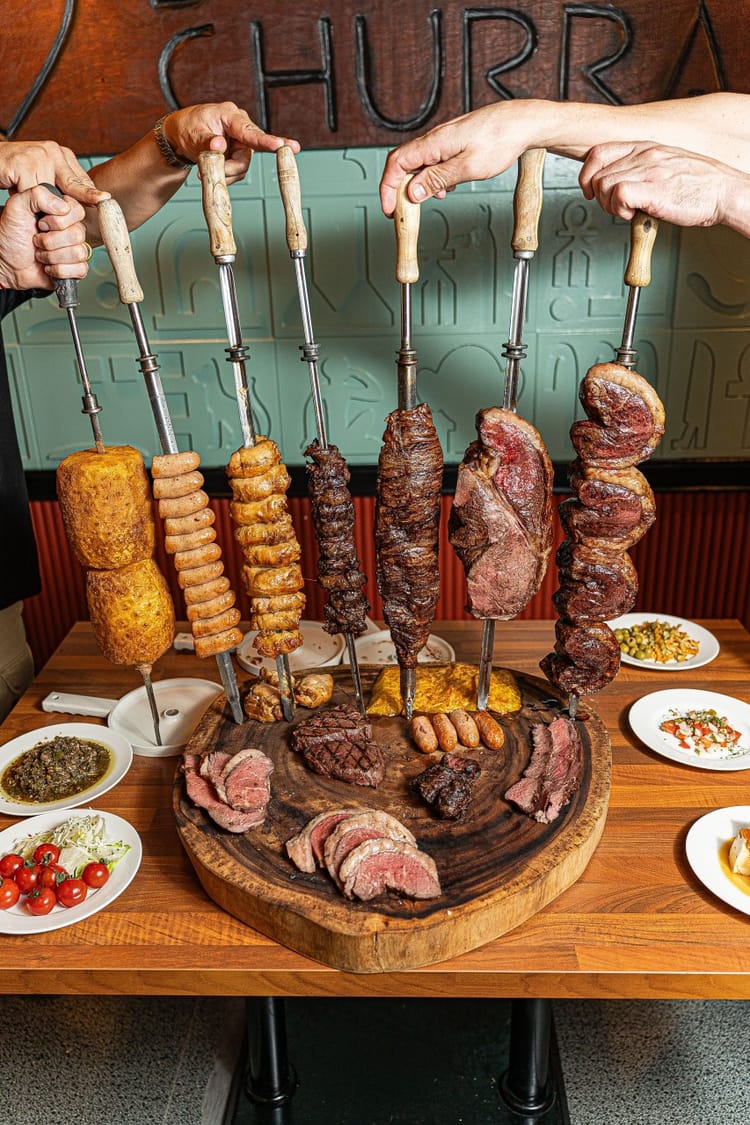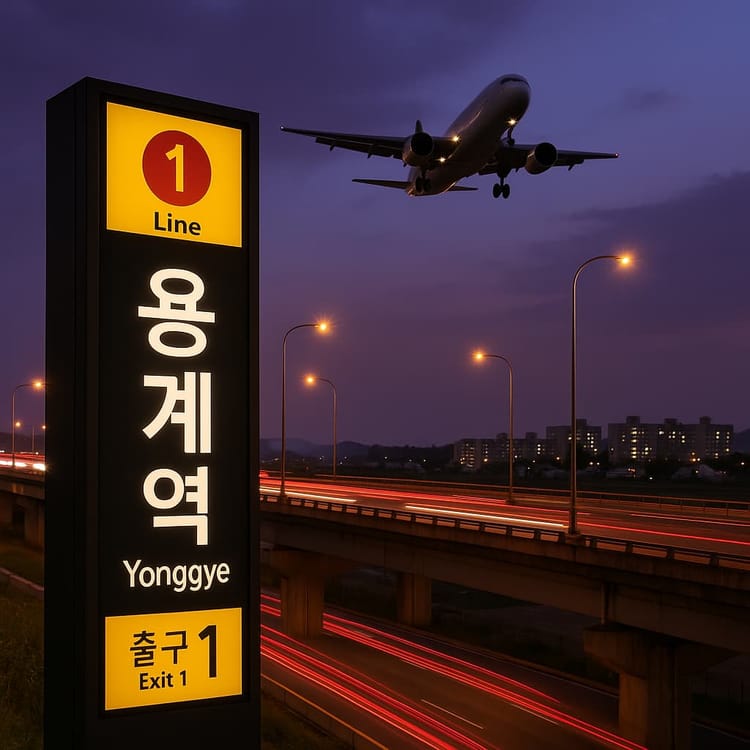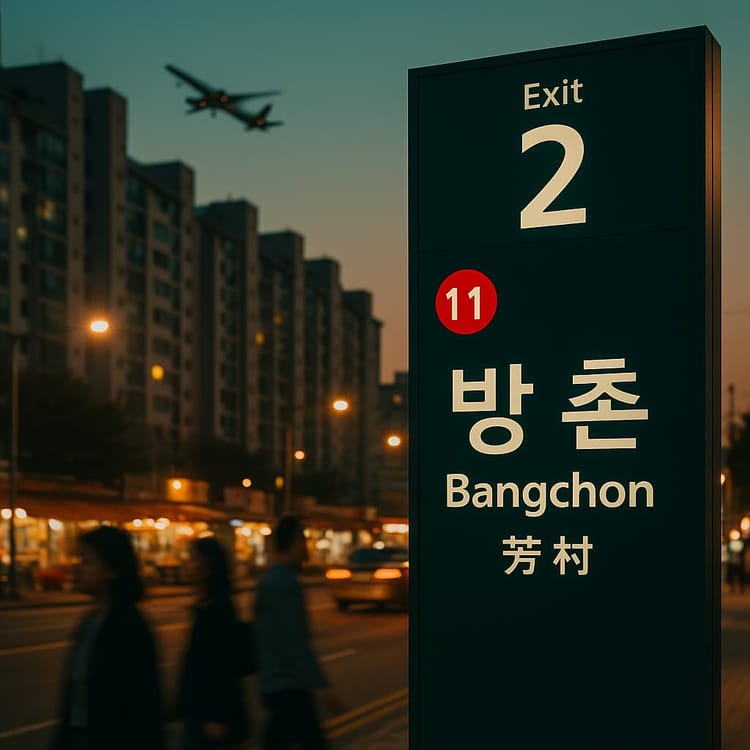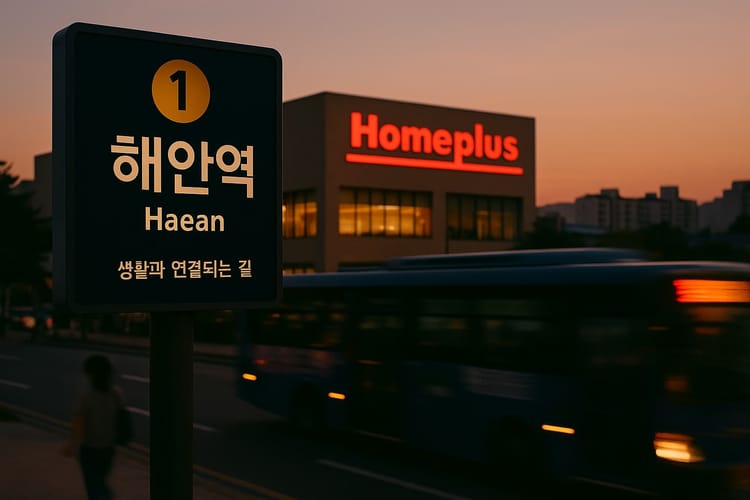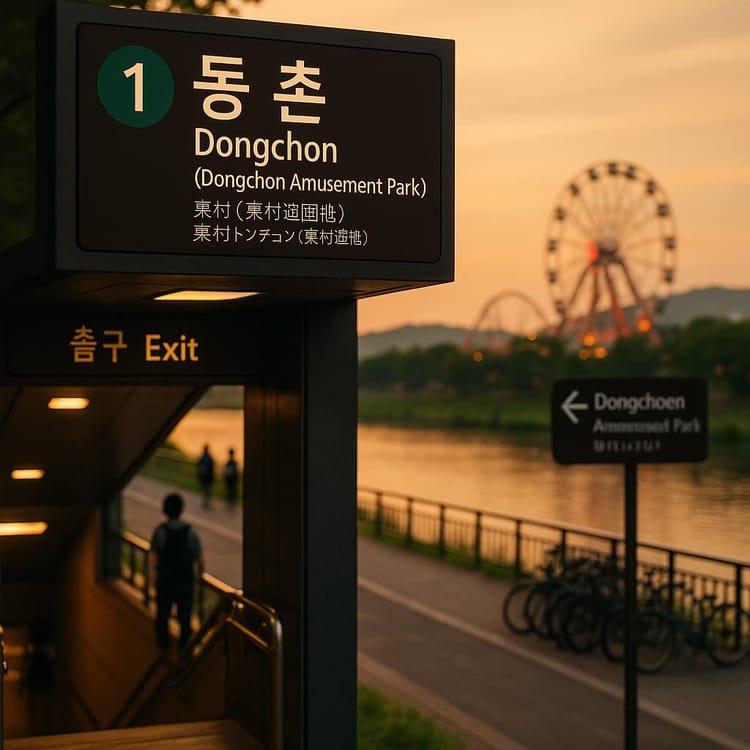Samdeok-dong Rodeo Alley: Daegu’s Youth Culture Strip
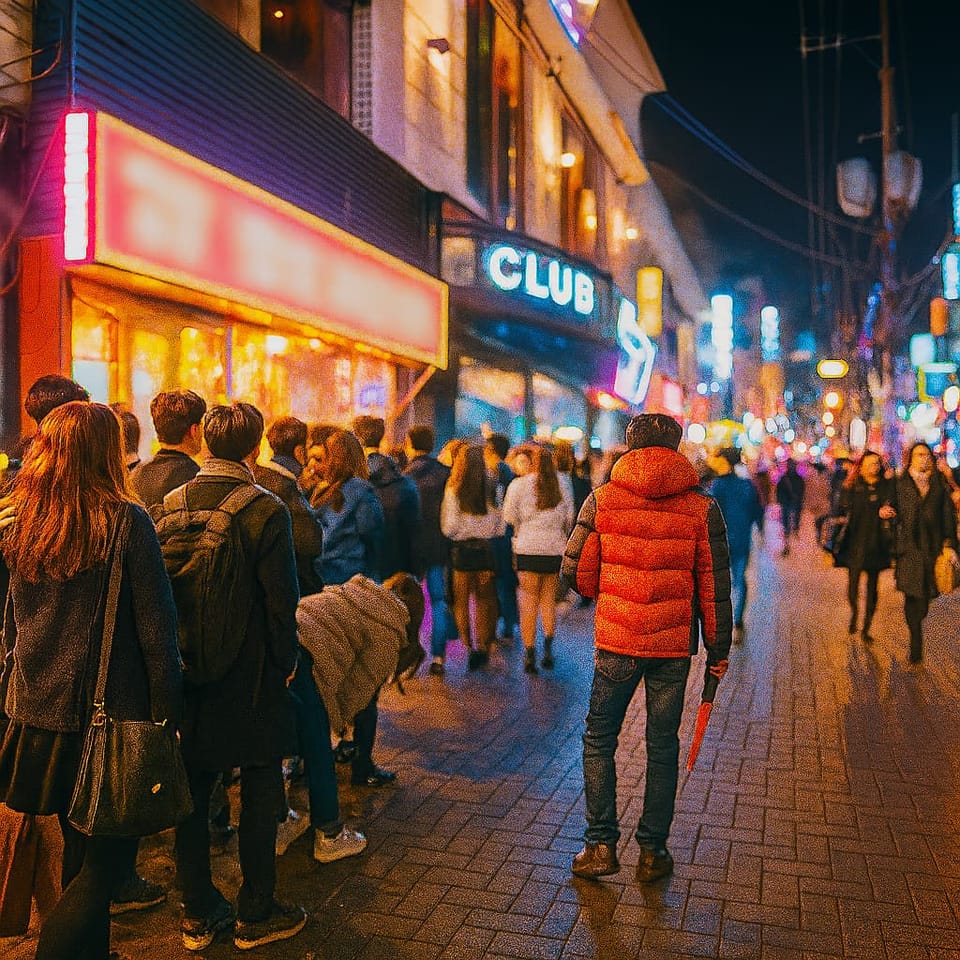
Looking for the real after-dark energy in Daegu? Skip the tourist gloss of Dongseong-ro’s main street and walk seven minutes east. You’ll reach Samdeok-dong's Rodeo Alley, a 500-meter stretch packed with late-night clubs, street fashion shops, and food joints that draw up to 50,000 people on weekend nights.
Once labeled a crime hotspot, this alley transformed in 2020 through a major safety redesign using crime prevention design principles. Now it’s where Daegu’s young crowd gathers to dance, shop, and stay out late.
This guide shows you where to find the action, what to try, and how to enjoy it smart.
Fast Facts: Samdeok-dong Rodeo Alley
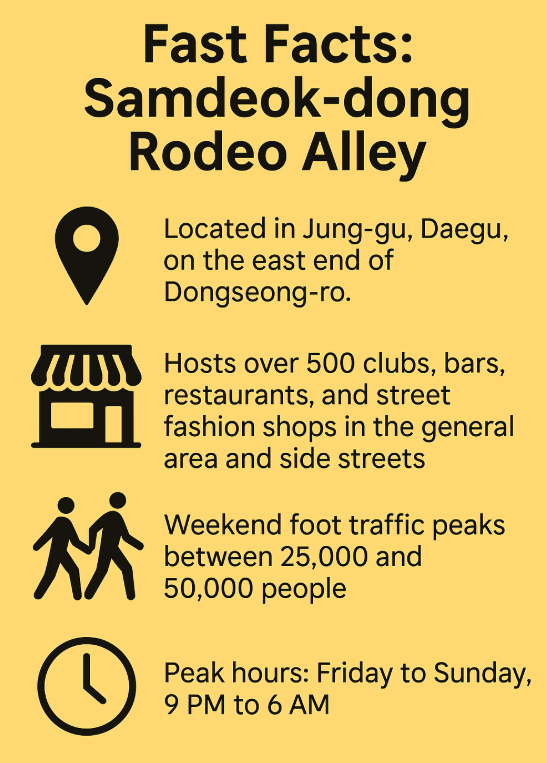
- Located in Jung-gu, Daegu, on the east end of Dongseong-ro. Near Banwoldang Station (Exit 13), 7 minutes on foot
- Roughly 500 meters long and 5 to 6 meters wide
- Hosts over 500 clubs, bars, restaurants, and street fashion shops in the general area and side streets
- Weekend foot traffic peaks between 25,000 and 50,000 people
- Peak hours: Friday to Sunday, 9 PM to 6 AM
- Underwent full safety redesign in 2020 using CPTED principles
- Crime dropped 13 percent overall, sex crimes dropped over 30 percent
- Safety upgrades include LED signs, emergency call buttons, safety mirrors, and color-coded road paint
- Nearby landmarks: Dongseong-ro shopping street, 2·28 Memorial Park, Samdeok 119 Fire Station
How to Get There
The easiest way to reach Samdeok-dong Rodeo Alley is by subway. Take Line 1 or Line 2 to Banwoldang Station, one of Daegu’s busiest transfer points. Use Exit 13, then walk east for about 7 minutes. The alley entrance starts near the Samdeok 119 Fire Station, just before the intersection with Dongseongro 4-gil. Alternatively, many visitors come to the area by taking a taxi to the fire hall and easily finding a taxi around there for the trip back home.
You’ll recognize it by the dense cluster of neon signs and narrow lanes. The main strip runs roughly parallel to Dongseong-ro but sits slightly offset to the east. If you pass the 2·28 Memorial Park or the back entrance of former Daegu Department Store, you’ve gone too far.
Landmarks to help orient:
- Samdeok 119 Fire Station – western entry point
- Dongseongro 4-gil – main cross street
- Former Daegu Department Store – West of the alley
- 2·28 Memorial Park – short walk north for daytime breaks
It’s best to visit on foot. The roads are narrow, vehicle access is restricted, and parking is limited.
History and Name Origin
The name “Rodeo Alley” wasn’t born in Daegu. It was borrowed from Seoul. In the 1980s, Seoul’s Apgujeong Rodeo Street became a hub for youth fashion, nightlife, and imported trends. As other cities tried to capture that energy, the “Rodeo” brand spread. Daegu’s version grew organically at the eastern edge of Dongseong-ro, where rent was cheaper and independent shops began clustering.
Samdeok-dong’s Rodeo Alley gained traction through the 1990s and early 2000s as more clubs and casual clothing stores opened. By the 2010s, it was known across Korea for its dense nightlife scene and mix of college students, local creatives, and visiting GIs.
Locals sometimes call it the “Club Alley” or “삼덕동 클럽골목” due to the number of venues packed into a short stretch. It also earned a rough reputation at times, especially before the city’s 2020 redesign. But that edge is part of what made it feel real to Daegu’s youth scene.
Safety and Security Overhaul
By the late 2010s, Samdeok-dong Rodeo Alley had become one of Daegu’s most active but also riskiest nightspots. With over 500 venues packed into narrow alleys, the area saw high rates of assault, theft, and harassment. Especially between midnight and 4 AM.
In 2020, Daegu’s Jung-gu District launched the “명물거리 안심환경” (Safe Street Landmark) project. The goal: redesign the alley using CPTED (Crime Prevention Through Environmental Design) to make it safer without losing its cultural pulse.

Key changes included:
- LED signage broadcasting safety messages and warnings
- CCTV expansion to cover blind spots and alley intersections
- Emergency call buttons linked directly to local police and monitoring centers
- Safety mirrors and numbering on utility poles to speed up emergency response
- Color-coded pavement using bright yellow and navy for better nighttime visibility
- Steel fencing and lighting in formerly dark gaps between buildings
The visual rebrand helped shift the area’s image from danger zone to urban nightscape. The results were measurable:
- Major crime dropped by 13 percent within six months
- Sex crimes dropped by 30 percent, according to the Daegu police department
- Local residents and business owners reported higher foot traffic and lower anxiety
Today, Samdeok-dong Rodeo Alley is not only busier but widely seen as safer — a rare example of design-driven safety working in a real-world nightlife zone.
What to Do During the Day
Rodeo Alley might be famous for its nightlife, but the daytime crowd tells a different story. By noon, the area is busy with shoppers hunting for affordable fashion, vintage looks, and streetwear you won’t find in big-name stores. Many shops here are independent or small franchises, so inventory turns fast and trends shift weekly.
You’ll spot:
- Boutique racks spilling into the street with 10,000 won tees and jackets
- K-style shops mixing local brands with imported stock from Japan and Thailand
- Seasonal pop-ups selling accessories, sunglasses, and DIY nail kits
It’s also a quiet window to explore cafés before the nightlife rush begins. Local favorites include:
- Cafe Flat – Minimalist design and deep espresso, tucked off a side alley
- 레몽 Izakaya (by day) – Affordable lunch bento before it flips to a bar at night
- Samdeok Bakery – Old-school charm, red bean bread, and steady foot traffic from locals
- Oneday Café – Known for rooftop seating and handmade cookies
Shops generally open between 11 AM and noon, peak around 2 PM, and close before the nighttime scene resets. For a slower pace, visit on a weekday afternoon and take your time wandering without the evening crowd.
Nightlife Breakdown
When the sun sets, Samdeok-dong Rodeo Alley flips into high gear. Clubs start filling up after 9 PM, with lines stretching around corners by midnight. Most spots don’t charge cover until 10 PM, and the party often runs until 6 AM. Expect bass-heavy soundtracks, light shows, and packed floors with college students, local dancers, and curious visitors.
Club types you’ll see:
- Standing clubs with no central stage, just open floors and DJ booths
- Bottle bars with table service and K-pop hits until dawn
- Theme nights like hip-hop Fridays, EDM Saturdays, or retro Korean throwbacks
- No-band zones – it’s all DJs and playlists, no live acts here
Most clubs focus on energy over polish. There are no dress codes, but clean sneakers and casual-cool outfits fit the scene. Entry is often 10,000 won with one drink included.
Weekend crowd vibe:
- Friday night starts slower, more local-heavy
- Saturday is peak, with shoulder-to-shoulder traffic by 11 PM
- College semesters and exam breaks shift the tempo. Busier in March, May, October
Local drinking etiquette and tips:
- Carry your ID. Random checks are rare but real
- Many clubs use wristbands for re-entry. Don’t lose them.
- Public intoxication is loosely tolerated but not tolerated by police if things get loud or physical
- Local bars often expect patrons to order food with alcohol (called 안주 anju)
- Don’t take drinks from strangers unless you can see the pour
- Ride apps like Kakao T or UT are your best bet for a safe ride home after 2 AM
Where to Eat After Dark
When clubs close or you need to recharge mid-party, food is never far. Samdeok-dong Rodeo Alley has a dense lineup of late-night eats, from smoky izakayas to spicy Korean comfort food. Most spots serve until at least 3 AM, and a few run until sunrise.
Top food picks to look for:
- 레몽 Izakaya – Japanese bar-style dining with grilled skewers, donburi, and sake. Cozy but loud. A favorite on Naver for pre-club dinners and post-club detox.
- 삼덕골목 떡볶이 – Spicy rice cakes with fish cakes and ramyun noodles. Open until 4 AM. Crowded but worth it.
- 한끼포차 – Korean street-style pub with soju, kimchi pancakes, and spicy pork belly. Patio seating when weather allows.
- 군만두집 골목 안쪽 – Hidden dumpling stall known only to locals. Crispy outside, garlic-heavy inside. Cash only.
Snack staples to try between venues:
- Grilled buttered corn (버터옥수수)
- Torn hotteok with syrup (찢어먹는 호떡)
- Cheese-topped spicy cup noodles (치즈컵라면)
If you're still hungry at sunrise, local sullungtang (ox bone soup) joints open around 6 AM for a calm reset before heading home.
Events and Peak Seasons
Samdeok-dong Rodeo Alley follows its own rhythm, tied closely to Daegu’s student life and festival calendar. If you want the full energy of the area, or prefer to avoid the crush, timing matters.
Busiest times of year:
- March to early May – Spring semester kick-off, warm weather, and festival season
- Mid-June to August – Summer break and school exams ending bring long weekend parties
- Late September to October – Chuseok holiday clusters and cooler nights boost outdoor traffic
- December – End-of-year celebrations, graduation dinners, and heavy club activity
Weekly peak flow:
- Fridays after 10 PM – Students and locals start arriving
- Saturdays 9 PM to 2 AM – Absolute peak
- Public holiday eves – Crowds double, especially during multi-day breaks
Law enforcement and curfews:
- Police increase foot patrols during national holidays like Chuseok and Lunar New Year
- Mobile command vans sometimes park near the 119 Fire Station on high-traffic nights
- No formal curfew, but underage club access is tightly monitored during student breaks
- Misbehavior (especially public fights or noise complaints) is more likely to trigger police response on those nights
If you’re visiting for a photo walk or just curious about the vibe, aim for weekday nights or Sunday evenings for a quieter experience.
Local Culture and Reputation
Samdeok-dong Rodeo Alley has a split personality. Both loved and side-eyed by locals. Among Daegu youth, it’s seen as a space to break free from daily routine. It’s where students celebrate exams, friend groups pregame, and couples bar-hop without dress codes or reservations.
The local vibe in three words:
- Fast
- Loud
- Unfiltered
Clubs here aren’t posh, and that’s the point. Most Daegu natives know the alley well and treat it like a rite of passage. You’ll hear locals refer to it casually as "클럽골목" (club alley), and even those who avoid it usually have at least one story that starts here.
What expats say:
- Younger expats and exchange students like the energy, affordability, and easy mixing
- Long-timers often view it as “once is enough” due to the chaos after midnight
- Some call it Daegu’s version of Hongdae, minus the tourists
Common myths vs reality:
- “It’s dangerous.”
Used to be true. Now it’s heavily monitored and redesigned for safety. - “You’ll only see college kids.”
Not quite. There’s a wide mix of early 20s to early 30s depending on the night. - “Foreigners aren’t welcome.”
Outdated. Most bars and restaurants welcome all, though some club bouncers may check ID harder for non-Koreans. Especially during peak hours.
Media has often focused on crime headlines, but the city’s safety redesign flipped the story. These days, Samdeok-dong is seen more as Daegu’s raw nightlife heart than a problem zone.
Nearby Spots to Explore
Samdeok-dong Rodeo Alley doesn’t exist in isolation. It’s stitched into the broader Dongseong-ro zone. Daegu’s main shopping and culture corridor. If you're already in the area, these nearby spots are worth a detour:
Dongseong-ro Main Street
Just west of the alley, Dongseong-ro is Daegu’s flagship retail strip. Major brands, underground shopping, and street performances make it a solid daytime anchor. It’s also a smoother landing zone if Rodeo Alley feels too dense at night.
2·28 Memorial Park
A short walk north brings you to this peaceful open space honoring Korea’s pro-democracy student protests of 1960. It’s quiet, well-maintained, and ideal for catching your breath before or after the alley.
Samdeok 119 Fire Station
This station marks the unofficial entrance to the alley and often features in local street photos. The bold red trucks and “Rodeo” signage nearby give it a gritty urban vibe. Especially photogenic at night when the signage glows.
Other ideas within 10 minutes on foot:
- Daegu Modern History Museum (closed late but solid in the afternoon)
- Tiny back-alley cafés just south of the main club strip — good for people-watching without the noise
If you’re planning to explore on foot, hit the Rodeo strip late afternoon, grab an early dinner, then pivot to Dongseong-ro or one of the quieter alleys nearby before the club rush kicks in.
Challenges and City Plans
Even with its safety upgrades and high foot traffic, Samdeok-dong Rodeo Alley faces growing pains. The area is evolving, and not everyone agrees on what it should become next.
Real estate pressure is building.
As foot traffic increased post-2020, rents in the alley rose fast. Some of the original low-cost fashion shops and street food stalls have been priced out. Landlords now prioritize nightlife venues that generate quick weekend revenue, which risks narrowing the alley’s cultural mix.
Demographics are also shifting.
The crowd remains youth-heavy, but there’s been a slow uptick in older visitors and tourists. This creates tension between the alley’s raw, open-party vibe and the city’s interest in creating a more “family-friendly” image for downtown Daegu.
Urban branding is underway.
Daegu has made clear it sees Rodeo Alley as a tourism asset, not just a club zone. Officials are exploring more permanent signage, branded lighting schemes, and multilingual visitor guides to reframe the area as a “safe culture street” rather than a nightlife pocket.
Future CPTED upgrades in discussion include:
- Motion-sensitive lighting in alley offshoots
- Expanded CCTV coverage with live-monitoring during peak hours
- QR-coded safety maps and digital signage near key intersections
- Pilot programs for nightlife ambassador patrols. Trained staff to assist and de-escalate
The next few years will likely determine if Rodeo Alley can keep its edge while growing into something broader. For now, the tension between party space and polished attraction is what gives it real texture.
Visitor Tips
First time visiting Samdeok-dong Rodeo Alley? Here’s what to know before you dive in:
🪪 Bring ID
Korean clubs often check age strictly, especially for foreigners. A physical passport or ARC (Alien Registration Card) is safest. Phone photos may be rejected.
📵 Stay charged
Phone signal can dip in tight alleys and some basement clubs. Carry a battery pack and screenshot your route in advance if you're meeting friends.
💸 Cash is still useful
Most venues accept cards, but smaller street stalls, snack shops, or late-night taxis may prefer cash. A 20,000 won emergency stash goes a long way.
🧾 Order food with drinks
In bars and izakayas, it’s expected you’ll order food, even just fries or fish cakes, with alcohol. Skipping this can annoy staff or cut your time short.
🧍 Don’t block alleyways
It’s tempting to pause for photos, but the alleys are narrow and traffic builds fast. Step aside or use storefront corners to regroup.
🛑 Know your limits
Daegu is friendly but not forgiving when things go sideways. Drunk arguments or shouting can bring police fast. Keep it light, and move on if someone’s getting aggressive.
🧭 Use Kakao T or UT for rides
After midnight, taxis are competitive. Call ahead through an app to avoid long waits or inflated fares.
😷 Local etiquette still matters
Even in a party zone, you’ll stand out more as a foreigner. Use soft language, mind your volume, and show respect in public spaces. It earns goodwill.
Frequently Asked Questions
Is Samdeok-dong Rodeo Alley safe at night?
Yes. Especially after the 2020 safety redesign. CCTV, emergency buttons, and better lighting have lowered crime significantly. Stay aware, avoid isolated corners, and move with the crowd.
Can teenagers enter the area?
Yes, teens can walk the streets and visit food spots or cafés. But most clubs and bars check ID and restrict entry to those 19 and older (Korean age).
Is there a dress code for clubs?
Not really. Clean casual works fine. Sneakers, jeans, oversized tops are common. Avoid flip-flops or anything that looks too touristy.
Are clubs open on weekdays?
Some are, but the energy is lower. Fridays and Saturdays are the main party nights. Weekdays feel more like after-class lounges than full-scale parties.
Where’s the best spot to start the night?
Begin at the Samdeok 119 Fire Station entrance. From there, walk east through the club zone, stopping at izakayas or snack stalls before entering a venue.
Are there English-friendly spots?
Yes. Many venues have minimal English signage, but staff are used to foreigners. If in doubt, follow the crowd or choose larger spots with visible menus.
What time should I arrive?
If you want a table or less crowd, arrive before 9:30 PM. For full energy, show up around 11 PM. Most clubs hit capacity by midnight on weekends.
Is it okay to take photos inside clubs?
Depends on the venue. Some allow casual snaps, others ban flash or videos completely. Look for signage or ask staff.

